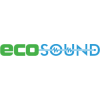Soundproofing in an apartment or house
- 09 August 2020 22:56:00
- Reviews: 0
- Views: 1158
-

Noise reduction from outside and between rooms in a house can be achieved mainly through the use of suitable building materials. However, you can take some additional steps to improve sound insulation.
 The requirements for improving the acoustic properties of walls and ceilings in the case of cottages and chalets are usually different from the requirements for apartments or family houses in more noisy urban areas. In vacation homes, you usually do not comply with the requirement to reduce noise from outside or from neighbors. Much more often, there is a need for improved soundproofing of partitions and ceilings due to the construction of living quarters in the attic, the increased need for privacy due to growing children, the use of a cottage for a large family, or the proximity of a more noisy workshop to living quarters.
The requirements for improving the acoustic properties of walls and ceilings in the case of cottages and chalets are usually different from the requirements for apartments or family houses in more noisy urban areas. In vacation homes, you usually do not comply with the requirement to reduce noise from outside or from neighbors. Much more often, there is a need for improved soundproofing of partitions and ceilings due to the construction of living quarters in the attic, the increased need for privacy due to growing children, the use of a cottage for a large family, or the proximity of a more noisy workshop to living quarters.
In all cases, it is more efficient to take measures to reduce noise during construction. Therefore, use masonry and insulating materials that will help to reduce penetrating noise due to better acoustic parameters. These can be mainly acoustic boards for soundproofing load-bearing walls and non-load-bearing partitions, as well as thermal insulation made of various materials or special acoustic panels. Increasing the degree of sound insulation should be considered comprehensively, i.e. include walls, ceiling, floor, windows and doors in noise reduction measures at the same time, since noise is distributed throughout the structure.
Additional insulation
However, more often summer residents and summer residents are forced to deal with additional soundproofing of a finished house. In this case, it is desirable to find an option that will require minimal intervention in the structure and for the assembly of which there will be enough tracks of a “dry” building without unnecessary demolition or finishing. Even in this case, several types of insulating materials can be selected. However, first choose between contact or non-contact insulation.
For soundproofing that does not involve any extremes, such as to reduce the noise from ordinary conversations, television sound or recorded music, some contact insulation should be sufficient, which are mounted directly on the wall or partition and should not involve the creation of an air gap between the insulation and wall. The thickness of such insulation should not normally exceed 5 centimeters, but it can be reduced depending on the performance of the individual insulators.
A more thorough measure, which makes sense in case of penetration of more intense noises, such as low-frequency bass or, conversely, high-frequency noise from some workshop equipment, requires a fairly non-contact acoustic isolation. This will effectively create a special noise barrier attached to the floor and ceiling that does not touch the insulated wall. The combination of a “pre-wall” of insulating material, an air gap and the wall itself creates a sufficient acoustic barrier. However, in this case, it is necessary to count on an increase in the thickness of the insulated wall up to ten centimeters.
An option that can be considered, for example, when building a workshop, a potter's wheel studio or a home music studio, or any other noisy room, is acoustic insulation to prevent noise from penetrating from the room to the outside. In this case, one or more contact insulation layers are usually sufficient.
Ceilings and noisy steps
Unpleasant acoustic load can also be created by movement or noise in the premises of the ground floor or in the attic of a residential building. In this case, the most effective measure is any solution that captures and reduces noise before it is transferred to the supporting structures of ceilings and walls. Various types of insulation can be used for this, including acoustic boards, special foam or acoustic tapes.
The penetration of noise from the room into the space above it can be solved by contact insulation of the ceiling or an acoustic barrier on the ceiling structure using soundproof gaskets.
Another measure that can significantly improve the sound insulation of ceilings and reduce the transmission of sounds to lower rooms is soundproofing the floor. For this, insulating materials are used to reduce impact noise. The most important property of shock insulation is its elasticity. With higher elasticity, you can better reduce noise. This measure pays off, especially when laying laminate or wooden floating floors or decking, and you will achieve the best results with a suitable combination of ceiling acoustic insulation and floor impact insulation, or by soundproofing the floor in the upper room combined with acoustic ceiling insulation in the lower room.
Which insulation materials to choose
When erecting new walls or partitions, you can start with acoustic panels. On the market you will find, for example, Ecosound Macsound Prof acoustic panels, but other manufacturers of acoustic materials and blocks also have them in stock.


